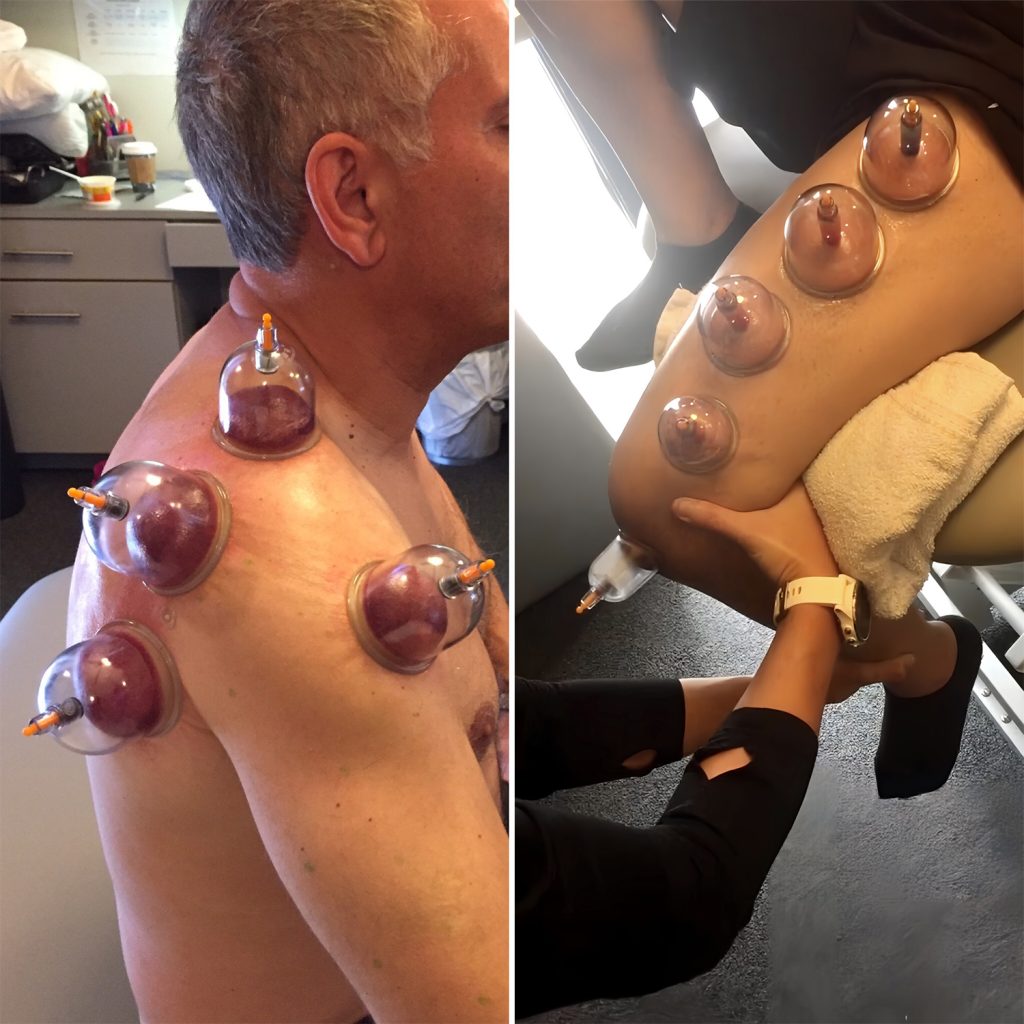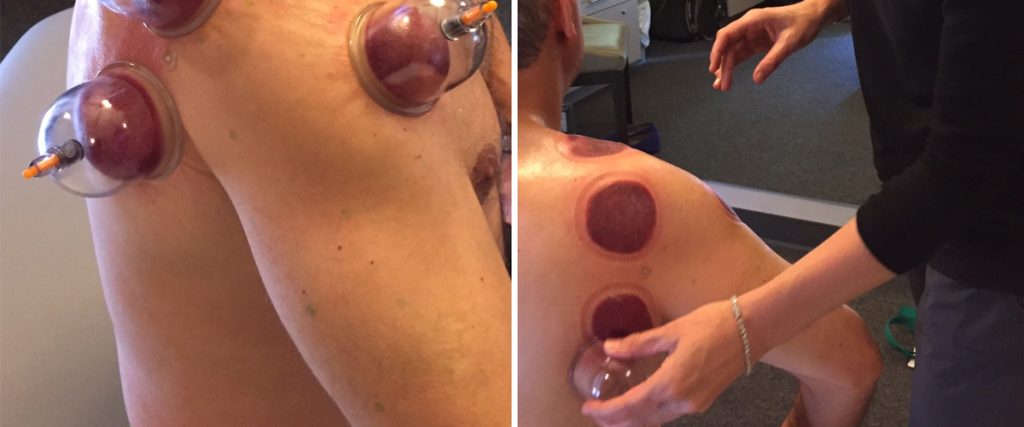Do you remember the red circles on Michael Phelps’ back during the 2016 Summer Olympics? Athletes are among the most popular groups of people to use Cupping, also known as Myofascial Decompression (MFD), to treat soft tissue injuries in order to reduce soreness and speed up the healing of overworked muscles, but it’s also safe for patients of all ages and activity levels.
Myofascial Decompression is a negative pressure technique used in conjunction with active movements which make biomechanical structural changes in order to improve muscle flexibility, tissue tension, joint mobility, strength, and pain. Common myofascial treatments, such as stretching, soft tissue massage, and myofascial/trigger point are all common “compressive” techniques, while MFD is the only “decompressive,” negative-pressure technique.
The origin of myofascial decompression has ancient roots. Traditional Chinese Medicine cupping uses heat and glass cups to provide the decompression of the restricted area to treat pain, headaches and immune disorders. Traditional Cupping is passive, as patients are generally seated or lying down and the cups are left on for up to 20 minutes.
MFD, on the other hand, uses plastic cups with a handheld pneumatic pump instead, in order to create a negative-pressure vacuum inside. While the cups are positioned strategically on the patient’s body for a shorter duration, the patient then takes the affected joint or joints through active and active-assisted ranges of motion, guided by the physical therapist, in order to further the effects on the myofascial tissue. Once the cups are taken off the patient’s body, soft tissue massage and muscle activations are implored in order for the patient to maintain their new range of motion, mobility, strength, or decreased pain. Myofascial decompression can be done to the same area no more than once per week.

In response to the negative pressure, the tissue underneath the cup(s) becomes ischemic (there is restricted blood supply). Once the cup is released, there is an increase in blood flow and microcirculation within the local area. Blood re-enters the tissues, which produce endorphins and enkephalins that help regulate pain. The result is an overall increase in temperature within the tissue, leading to a reduction of hyaluronic acid viscosity. This allows for improved tissue and fascial gliding and mobility.
MFD can target both superficial and deep fascial tissue and research has shown that it can increase both a muscle’s length and its strength in elite athletes. MFD therapy also relieves pain by acting as a counterirritant and a decompressor of any type of nerve entrapment or compression.

